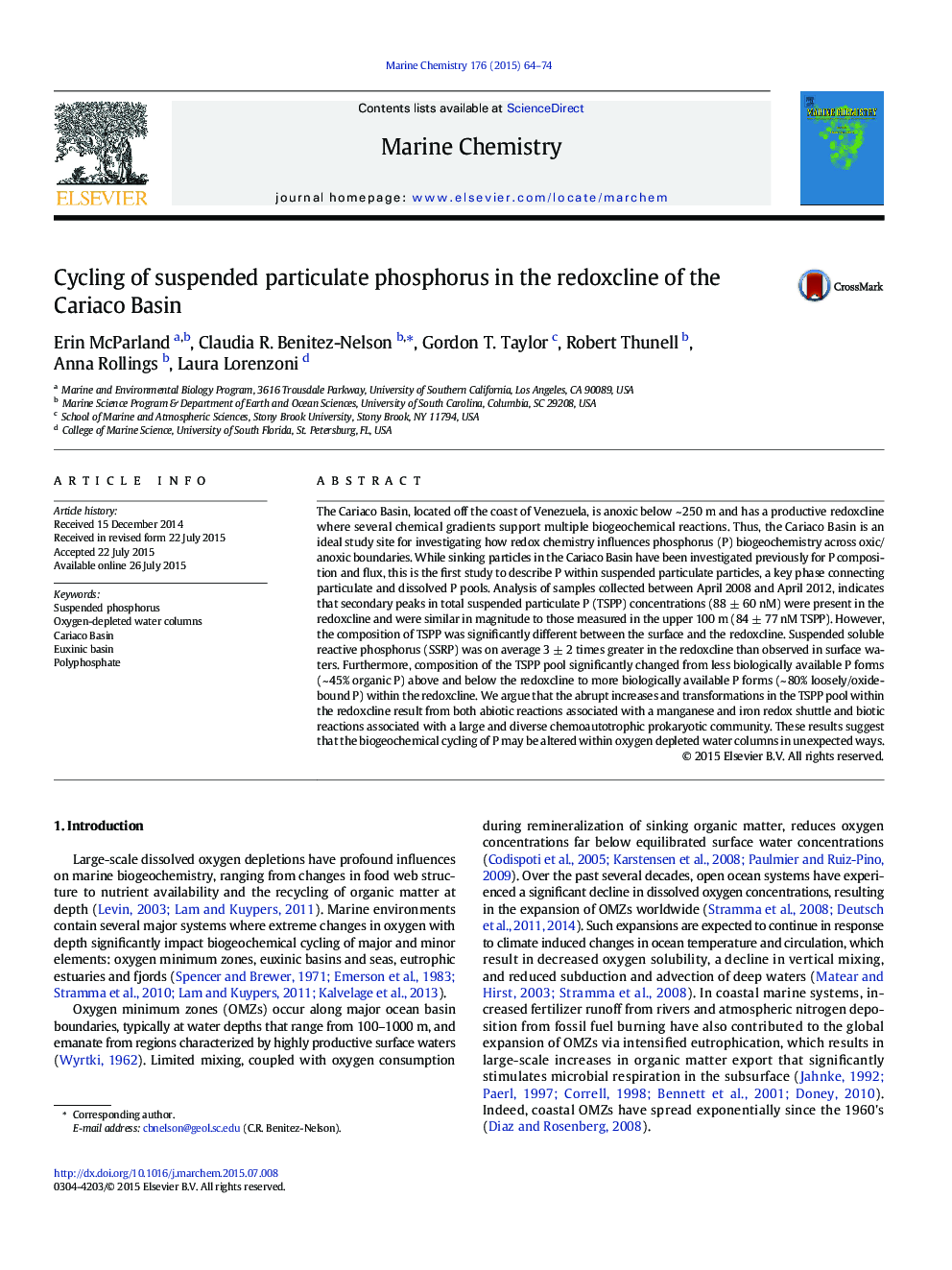| Article ID | Journal | Published Year | Pages | File Type |
|---|---|---|---|---|
| 7699225 | Marine Chemistry | 2015 | 11 Pages |
Abstract
The Cariaco Basin, located off the coast of Venezuela, is anoxic below ~ 250 m and has a productive redoxcline where several chemical gradients support multiple biogeochemical reactions. Thus, the Cariaco Basin is an ideal study site for investigating how redox chemistry influences phosphorus (P) biogeochemistry across oxic/anoxic boundaries. While sinking particles in the Cariaco Basin have been investigated previously for P composition and flux, this is the first study to describe P within suspended particulate particles, a key phase connecting particulate and dissolved P pools. Analysis of samples collected between April 2008 and April 2012, indicates that secondary peaks in total suspended particulate P (TSPP) concentrations (88 ± 60 nM) were present in the redoxcline and were similar in magnitude to those measured in the upper 100 m (84 ± 77 nM TSPP). However, the composition of TSPP was significantly different between the surface and the redoxcline. Suspended soluble reactive phosphorus (SSRP) was on average 3 ± 2 times greater in the redoxcline than observed in surface waters. Furthermore, composition of the TSPP pool significantly changed from less biologically available P forms (~ 45% organic P) above and below the redoxcline to more biologically available P forms (~ 80% loosely/oxide-bound P) within the redoxcline. We argue that the abrupt increases and transformations in the TSPP pool within the redoxcline result from both abiotic reactions associated with a manganese and iron redox shuttle and biotic reactions associated with a large and diverse chemoautotrophic prokaryotic community. These results suggest that the biogeochemical cycling of P may be altered within oxygen depleted water columns in unexpected ways.
Keywords
Related Topics
Physical Sciences and Engineering
Chemistry
Chemistry (General)
Authors
Erin McParland, Claudia R. Benitez-Nelson, Gordon T. Taylor, Robert Thunell, Anna Rollings, Laura Lorenzoni,
